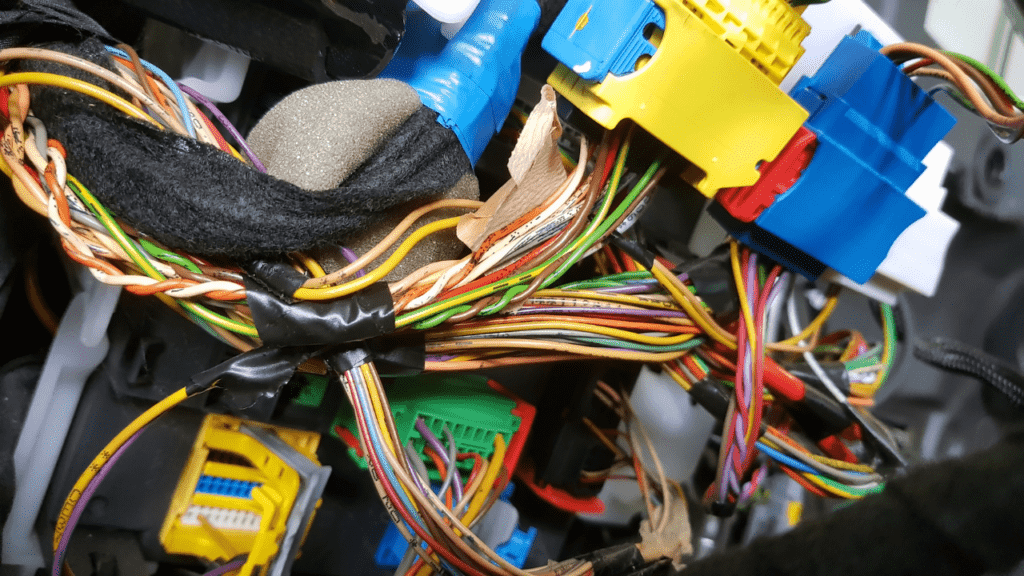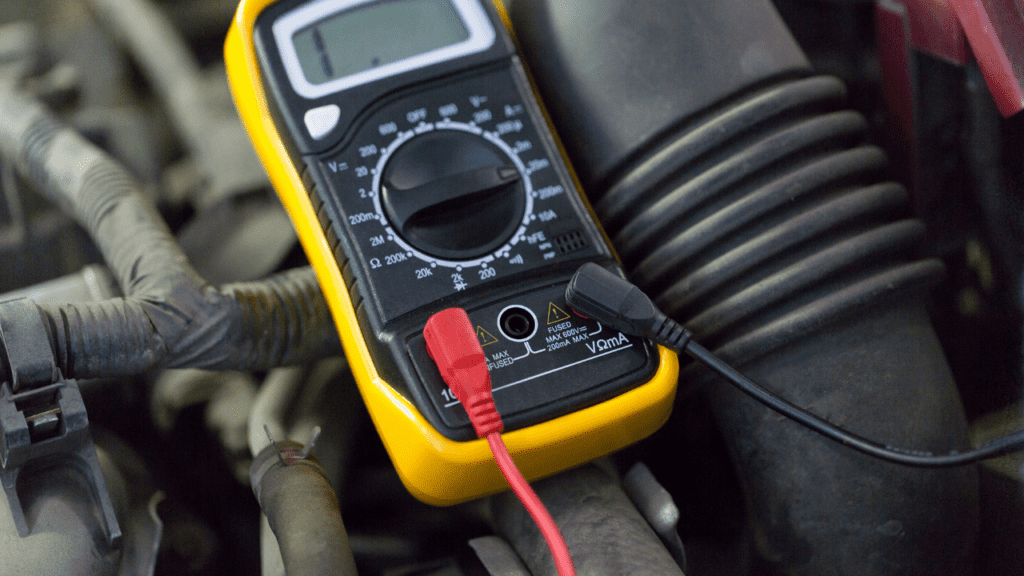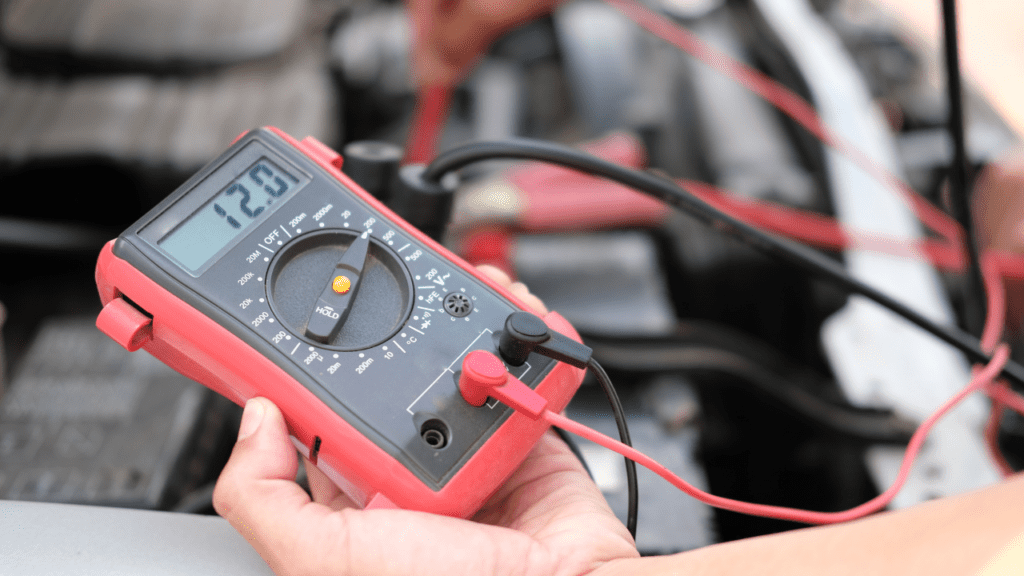
How to check the computer with a multimeter
Content
A faulty ECU is usually the cause of various problems with the smooth operation of a car. While a faulty ECU can cause the car's ignition to not start, it can also reduce fuel economy. Therefore, you want to know when there is a problem with your car's engine control unit and have it repaired.
The question is, how to check the ECU with a multimeter?
Although various problems may indicate a malfunctioning ECU, such problems may be due to other causes. Hence, your best bet is to troubleshoot your ECU and determine if it is responsible for the problems with your vehicle.
Interestingly, the multimeter is a simple tool for checking the ECU. With a multimeter, you can troubleshoot your ECU and find out which of its components is faulty.
What is an engine control unit?
ECU stands for "engine control unit". The ECU, also known as the engine control module, monitors the operation of the car's engine. The ECU collects data from multiple sensors in the engine, interprets the data, and uses it appropriately to improve engine performance.
Some actions in the vehicle's engine depend on the functionality of the ECU, and when the ECU is faulty, this is reflected in these actions.
The main activities controlled by the ECU include:
- Ignition time control: The ECU provides the correct timing for the adjustable valve. This means that the ECU detects when the valve opens. For example, a valve opens more at a higher speed than at a lower one. The ultimate goal of this feature is to improve fuel economy by increasing airflow into the cylinder to increase power.
- Adjust the air/fuel mixture: Another important function of the engine control unit is to balance the air-fuel ratio in the cylinder. Because the correct air/fuel mixture is required for the engine to run properly, the ECU receives data from the air sensors if the engine is running on too much fuel or air. In this case, the ECU makes the correct setting.

How do ECUs work?
As stated earlier, the ECU controls various activities in the car's engine. For example, the ECU controls the air/fuel mixture in a car engine. Since different variables are responsible for this particular activity, the ECU connects to different sensors that collect and send signals to the unit.
The correct air/fuel mixture for combustion in a car engine depends on factors such as driving requirements, engine temperature, air temperature, and fuel quality.
For driving, when the driver presses the accelerator pedal, the throttle valve opens to allow air to flow into the engine. Because it requires the right amount of fuel, the Mass Air Flow (MAF) sensor measures the air flow and sends the data to the ECU, after which the ECU injects enough fuel.
The point here is that the ECU collects data from different sensors to regulate different systems in the engine.

How to know if the ECU is faulty?
A failed ECU is usually easy to identify. With a few fairy tale signs, you can find out when your ECU is faulty. Here are some signs of a damaged ECU:
- Engine light always on: One of the main signs that your ECU is faulty is that the check engine light is always on and never goes off even after a factory reset. While this light can be on for a variety of reasons, a bad ECU is the main reason the check light stays on. Therefore, you want to test your board and determine the source of the problem.
- The car will not startA: If your car does not start, it may be due to a malfunction of the ECU. Other reasons why the engine won't start include a faulty starter, battery, and electrical components. Therefore, if your car won't start and they are all in good condition, it's logical to turn your attention to the engine control unit.
- Low performance: A bad ECU can lead to poor engine performance. For example, if your car's fuel efficiency is dropping, you can blame it on a faulty engine control unit.

What is a multimeter?
A multimeter is an electrical instrument used to measure various electrical components such as voltage. A multimeter, also known as a volt-ohm-millimeter (VOM) or meter, comes in analog and digital types.
While an analog multimeter displays readings with a moving pointer on a calibrated scale, a digital multimeter reads with multiple numeric displays.
A multimeter is the ideal tool for testing boards.
The preferred type of multimeter for an application depends on the circumstances. However, a digital multimeter is more advanced and less expensive than its analog counterpart. In addition, the multimeter is an ideal tool for board testing.

How to check the computer with a multimeter
One easy way to troubleshoot an ECU is to use a multimeter. With the right guidance, you can easily identify a bad ECU with a multimeter.
Here are the simple steps to follow when using a multimeter to test your ECU:
- Set up your multimeter
The first step in testing an ECU with a multimeter is to prepare the multimeter for the test. Start by setting the meter to the best available range.
In addition, since your meter may be electrocuted during testing, it is wise to take precautions. Installing a circuit breaker is an effective means of protecting the multimeter from electrical shock. Do this using a circuit breaker with one of the meter wires.
- Do a visual inspection first
Often problems with the ECU can be identified by visual inspection. Visual inspection means checking your ECU components and making sure they are intact and connected. This allows you to quickly identify faulty or disconnected components or circuits without using a multimeter.
Also, make sure the ECU is connected to the correct electrical components and is powered by the battery, as this could be causing a problem with your ECU.
If you cannot visually identify any component issues, proceed to troubleshoot them with your meter.
- Start with simple components
Your ECU is made up of various components and circuits. When checking, it is wise to start with the simplest components such as the fuse and relay. Because these components are more accessible to testing than more complex circuits, you want to start with them.
After testing each component, draw lots for amperage.
Continue the test by connecting the meter's positive lead to the battery ground terminal and momentarily touching the negative lead to the corresponding module harness connector terminal.
- Check power supply to components
It is worth noting that the components under test must be powered by a battery in order to obtain readings. Therefore, make sure that each component under test is receiving the correct voltage from the battery. If you find negative voltage, this indicates a problem.
- Turn on the ignition key
Turn on the key to check if the driver is supplying power. If the driver is supplying power, move the negative wire of the meter to the positive battery terminal. Do this briefly and carefully to avoid burning out the component or circuit.
- Write down the reading
Your multimeter reading gives you an idea of the condition of the component. The indication for the functional component must be between 1 and 1.2 amps. Any value greater than this value indicates that the component or circuit under test is faulty.

Frequently asked questions about the ECU
How to check ECU components?

Determine which pins on the ECU connector correspond to the component. Set the multimeter to the ohm setting (resistance mode) and connect the wires. Verify that the readings are within the expected range.
What is the most common ECM failure?
The most common ECM malfunction is a lack of synchronization between various components. This can lead to a number of issues, including data inconsistency, process crashes, and poor performance.
How to check the voltage on the computer?
Set the multimeter to constant voltage. Connect the black wire to ground and then touch the red wire to the wire you want to test. If it is below 12 volts, the board may not work properly.
What happens if the ECU fails?
If the ECU fails, the engine will not start. The board controls the fuel injectors of the engine, and if it fails, the injectors will not spray fuel into the cylinders and the engine will not start.
Disconnecting the battery resets the ECU?
It depends on the specific make and model of the car. In some cases, disconnecting the battery may reset the board. The ECU is usually reset on older cars, not new ones.

